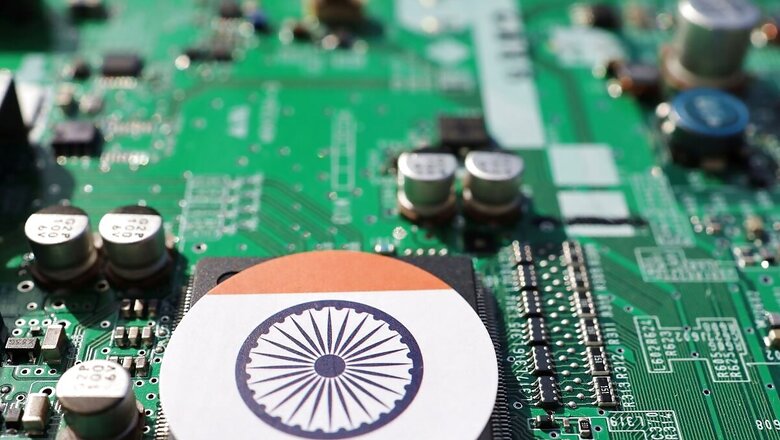
views
As our lives become increasingly reliant on technology, semiconductors have become the essential foundation of society. These tiny chips are the powerhouses behind our electronic devices, communication systems, and even the functioning of our agricultural implements medical equipment and vehicles. India has recognised the enormous socio-economic potential and strategic importance of this silent revolution of technology and is taking the lead in building a robust semiconductor ecosystem and developing a talented workforce.
India’s goal of becoming self-sufficient and a global leader in semiconductors is supported by the fact that the semiconductor industry is expected to generate over one million job opportunities for semiconductor design engineers, manufacturing engineers, R&D scientists, operators, technicians, and skilled workers in chip design and semiconductor fabrication, packaging, and sales facilities over the next five years.
According to the National Association of Software and Service Companies (Nasscom) and Zinnov’s latest report, “Around 30 per cent of the new global capability centres established in India during the December quarter of last year were in the semiconductor space, indicating a growing interest in leveraging the local talent pool in areas such as front-end design, performance testing, and post-silicon validation.” The world’s leading chip design companies, including Intel, Texas Instruments, AMD, Nvidia, and Qualcomm, have design and R&D centres in India. AMD recently inaugurated its largest global design centre in Bengaluru.
In March, an event – ‘India’s Techade: Chips for Viksit Bharat’, witnessed the foundation stone of three semiconductor projects worth Rs 1.25 lakh crore. Tata Electronics in partnership with Taiwan’s Power Chip Semiconductor Manufacturing Corporation (PSMC), set up the country’s first semiconductor fab plant in Dholera (Gujarat) with an investment of Rs 91,000 crore and another plant in Morigaon (Assam) with an investment of Rs 27,000 crore, with the first chips to begin coming off the production line in 2026.
US-based semiconductor manufacturer Micron India plant with an investment of Rs 22,500 crore in Sanand (Gujarat), is expected to roll out the first “Made in India” memory chips by December. It is contributing its bit to the Chandrayaan-3 mission Semiconductor Corporation of India (SCL) proposed to update and expand its chip facility in the Mohali plant with an investment of Rs 20,000 crore, to enhance its contribution to ISRO and to other space research organisations globally.
95 Percent Import Dependency
Despite the upward trajectory of India’s current semiconductor chip ecosystem, the country remains dependent on the US, Taiwan, China, Japan, Malaysia, Singapore, and South Korea, with over 95 per cent of semiconductors imported from these countries. To reduce this dependency on imports, India recognised the strategic importance of a robust domestic semiconductor industry.
It unveiled the India Semiconductor Mission (ISM) offering 50 per cent capital expenditure support to new entrants, production-linked incentive (PLI), and design-linked incentive (DLI) schemes with an outlay of Rs 76,000 crore, as well as state government incentive support, international partnerships, and a focus on talent development. The Electronic and IT Ministry plans to train over 85,000 engineers in chip design over the next five years to address the skill gap. Such focused efforts aim to guide the development of a self-sufficient ecosystem by fostering policies that nurture its growth.
Moreover, the geopolitical uncertainties involving the China-US trade war have compelled companies to seek alternative production bases or sourcing locations outside China. Amid this relocation in the industry, India and Southeast Asian nations like Malaysia, Singapore, Thailand, Vietnam, and Indonesia have been preferred for front-end manufacturing in the future. India’s entry into this ecosystem is timely and strategically important for diversifying the global supply chain and positioning India as a global hub for semiconductor design, manufacturing, and technology development, fostering the creation of employment opportunities for the nation’s youth.
Present Landscape and Scope of Growth
Bengaluru and Hyderabad together host about two-thirds of India’s semiconductor global capability centres (GCCs), which is over two-thirds of the total 55 semiconductor GCCs in the country. With more than 95 GCC units and a specialised workforce of 50,000, this demonstrates India’s strong commitment to the semiconductor industry.
Presently, India’s semiconductor market is valued at an estimated $15 billion and is expected to reach $55 billion by 2026. Smartphones and wearables, automobile components, computers, and data storage account for more than 60 per cent of the market.
Challenges
Semiconductor manufacturing is an extremely complex process that requires precision at the smallest level. Since the global chip world is closely connected, Indian companies need to collaborate with countries like Taiwan and South Korea to gain access to advanced technology that will enable them to support emerging applications with more chip content, such as autonomous machines, smart medical devices, futuristic communications at 6G onward, and AI across electronics.
Bridging the skill gap
India needs to bridge the skill gap, especially for advanced chip design and fabrication. The global semiconductor manufacturing industry has a talent pool of 2.3 million, with nearly 25 per cent of senior talent being Indian. To attract and retain this talent, Indian companies are holding roadshows in Taiwan’s chip manufacturing centre of Hsinchu. Communications and IT Minister Ashwini Vaishnaw says, “The engineers who have decided to return to India from the US are younger, while those from Taiwan, Singapore, and Malaysia are generally over 45 years and with more experience. We expect many of them to come back to participate in India’s high-tech manufacturing revolution.”
Road Ahead
The future of the semiconductor industry in India holds immense promise. It will play a crucial role in shaping the country’s advanced technological landscape, driving economic growth, and positioning India as a global leader in innovation. The semiconductor industry will also generate opportunities for an entrant and Indian talent working in this sector globally, many of whom wish to return to their roots.
India’s ambition to become a self-reliant and dominant player in the semiconductor industry is clear. With the talent, resources, and infrastructure in place, India is poised to make significant strides in the semiconductor sector and establish itself as a global leader in the years to come.
The Author is Vice-Chairman of Sonalika ITL Group, Vice-Chairman (Cabinet Minister rank) of the Punjab Economic Policy and Planning Board, Chairman of ASSOCHAM Northern Region Development Council and President, Tractor and Mechanization Association (TMA). Views expressed in the above piece are personal and solely those of the author. They do not necessarily reflect News18’s views.



















Comments
0 comment